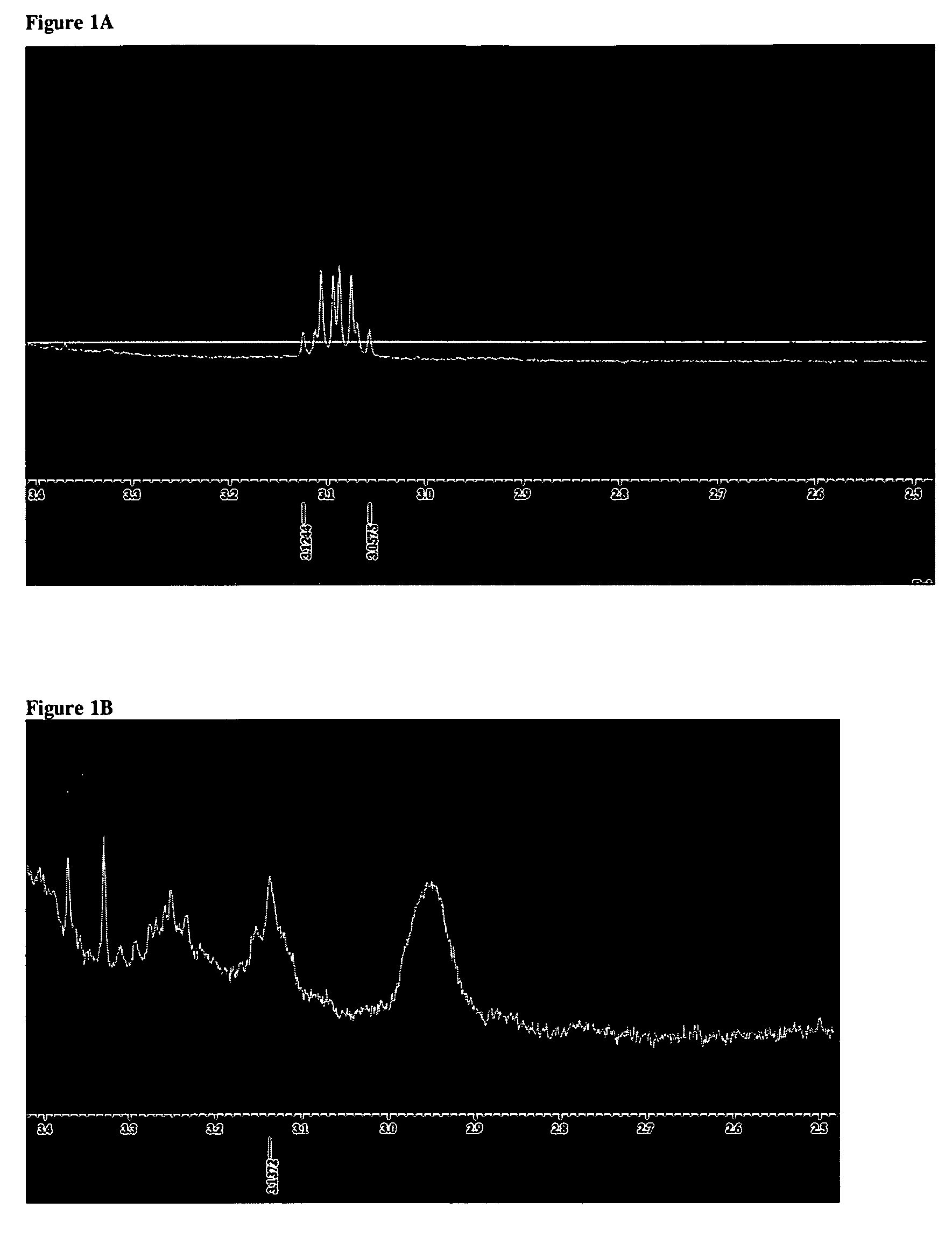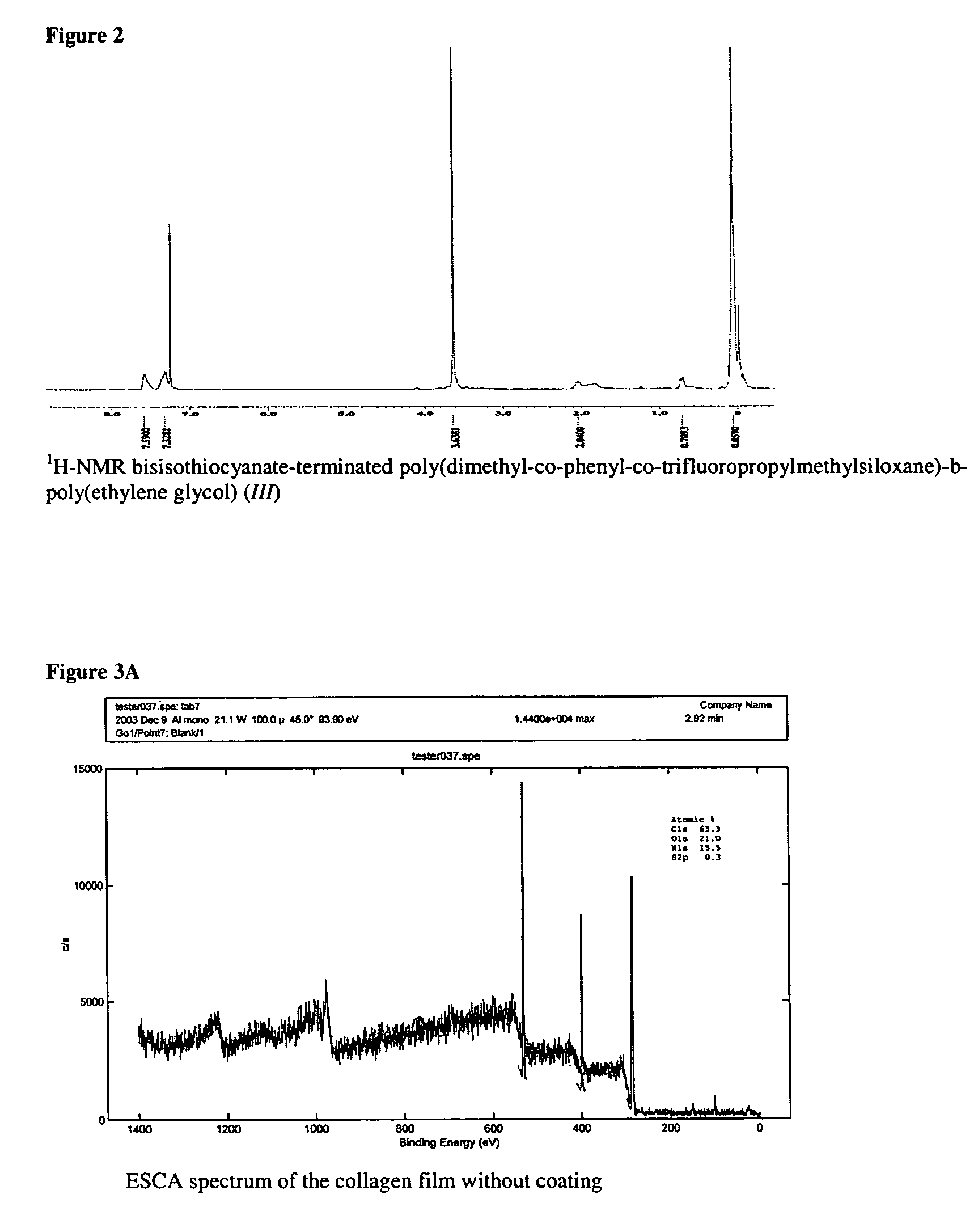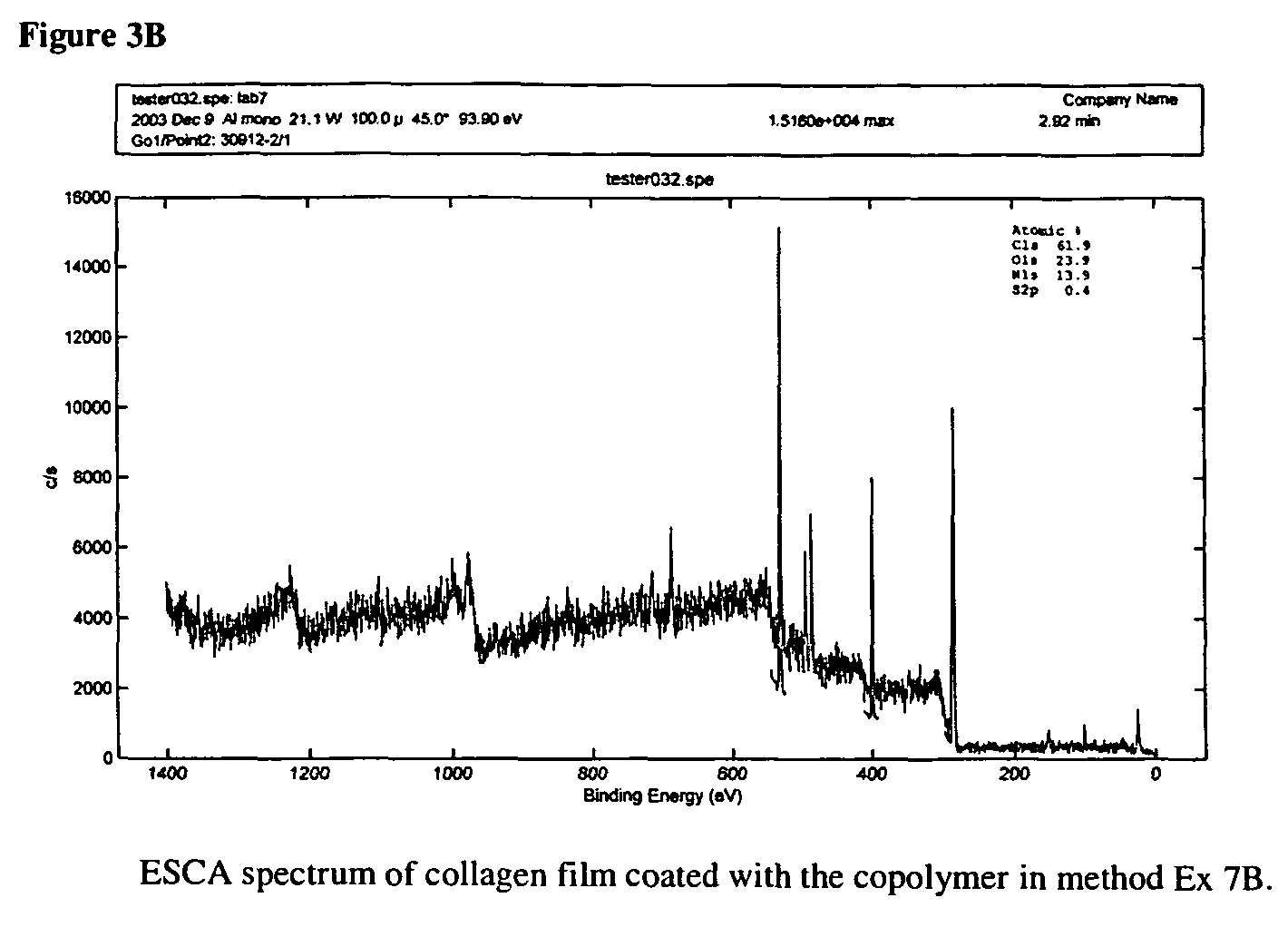Amphiphilic block copolymers and their use
a technology of amphiphilic block and copolymer, which is applied in the field of amphiphilic block copolymer, can solve the problems of affecting the tensile strength of tissue binding fibrin glue, so as to prevent secondary cataract
- Summary
- Abstract
- Description
- Claims
- Application Information
AI Technical Summary
Benefits of technology
Problems solved by technology
Method used
Image
Examples
example 1
Purification of H2N-PEG-NH2
[0035]10.93 g aminopropyl-ended PEG (Aldrich) and a magnetic bar were added to a 50 ml beaker, and the sample was dissolved with CHCl3 (12.1 g) to a total volume of ca 20 ml. A heating gun was used to melt PEG and also for increasing the dissolution. The obtained aminopropyl-ended PEG solution was clear and yellow and was then precipitated in ca 300 ml Et2O in room temperature (RT), i.e. the obtained solution was added to Et2O by a dripping funnel. This solution was cooled (in −18° C.) and then filtrated though a P4 glass filter and washed several times with Et2O and then dried in a beaker under vacuum (air pump) in RT. The obtained sample was transferred into an one-neck flask and dried with an oil pump for 2 h in RT and then freeze dehydrated over night and transferred into a 50 ml sample bottle under Argon. The sample color was changed from pale yellow wax to almost white powder. The sample was characterized with 1HNMR.
example 2
Synthesis of a Polysiloxane having Terminal Amino-groups (H2N—SP3-NH2)
[0036]Octamethylcyclotetrasiloxane (D4) and (3,3,3-trifluoropropyl)methylcyclo-trisiloxane (F3) were distilled before use. Octaphenylcyclotetrasiloxane (D4″) was recrystallized from toluene.
[0037]D4 (67.65 g, 0.2281 mole), D4″ (12.92 g, 0.0163 mole), F3 (16.96 g, 0.0362 mole), 1,3-bis(3-aminopropyl)tetramethyldisiloxane (3.84 g, 0.0155 mole) and potassium silanolate (0.0991 g) were added to an oven-dried 100 ml thee-neck round-bottom flask equipped with an over-head stirrer. The mixture was purged with nitrogen though the top of the condenser for several minutes (2-3 bubbles per second) and was kept cold with cooling water. The mixture was then heated gradually from 23 to 110° C. (heater scale at 150° C.) during 1.5 h. The temperature was kept at 110° C. for ca 30 min and was then raised to 120° C. within 30 min (heater scale at 175° C.). The oil temperature was controlled with a digital thermocouple. The total ti...
example 3
Synthesis of α, ω-bis-carboethoxy-dithiocarbamate Terminated poly(ethylene glycol) (EtOOCSSCNH(CH2)3O(CH2CH2O)n(CH2)3NHCSSCOOEt or I) in Aqueous Media
[0038]4.42 g (2.71 mmol) of purified bis(3-aminopropyl) terminated poly(ethylene glycol) (H2N(CH2)3(OCH2CH2)nO(CH2)3NH2, Aldrich), 10 ml of water and a magnetic stirring bar were added to a 100 ml thee-neck round bottom flask. H2N(CH2)3(OCH2CH2)nO(CH2)3NH2 was dissolved slowly in water in room temperature, which gave an opaque solution, and 5 ml MeOH was added. The solution became clear and palely yellow. The solution was cooled to −1 to −6° C. with ice-NaCl. 0.60 ml (9.95 mmol) of CS2 was added drop by drop with a syringe and the solution was stirred and chilled. Ca 3 ml KOH solution containing 0.60 g KOH (10.69 mmol) was chilled to 0° C. and added though a dripping funnel. After CS2 had reacted completely (ca 22 hours), the mixture was cooled to −3° C. with ice-NaCl and 1.00 ml (10.46 mmol) of ethyl chloroformate was added drop by dr...
PUM
| Property | Measurement | Unit |
|---|---|---|
| total volume | aaaaa | aaaaa |
| total volume | aaaaa | aaaaa |
| temperature | aaaaa | aaaaa |
Abstract
Description
Claims
Application Information
 Login to View More
Login to View More - R&D
- Intellectual Property
- Life Sciences
- Materials
- Tech Scout
- Unparalleled Data Quality
- Higher Quality Content
- 60% Fewer Hallucinations
Browse by: Latest US Patents, China's latest patents, Technical Efficacy Thesaurus, Application Domain, Technology Topic, Popular Technical Reports.
© 2025 PatSnap. All rights reserved.Legal|Privacy policy|Modern Slavery Act Transparency Statement|Sitemap|About US| Contact US: help@patsnap.com



